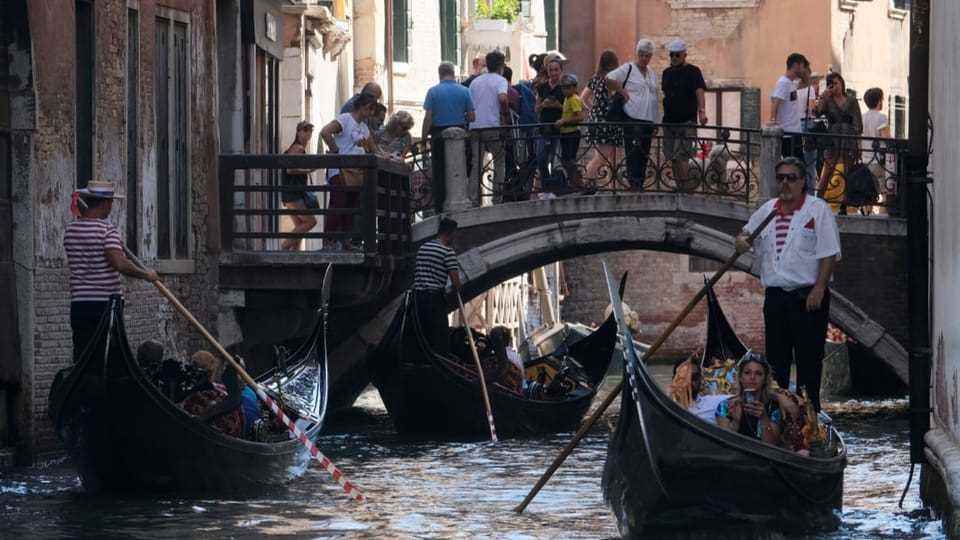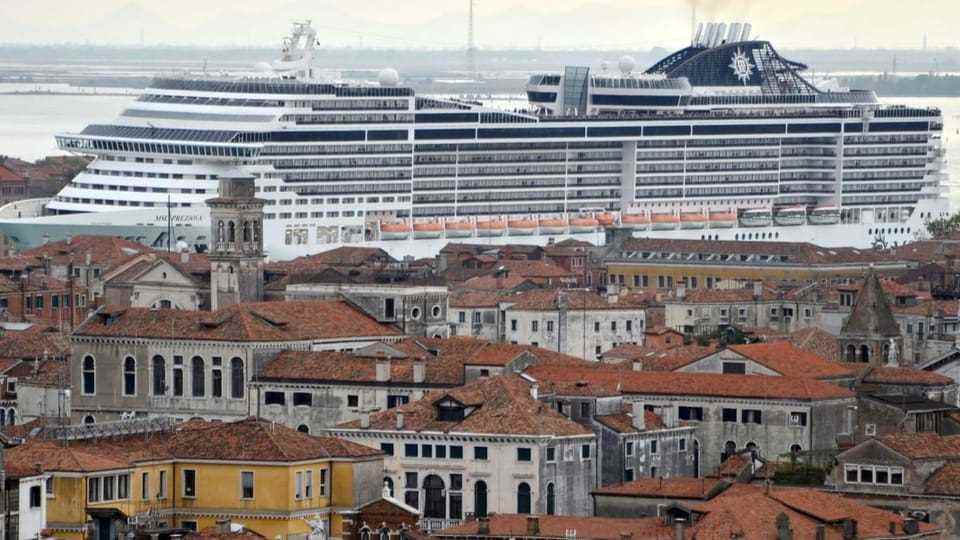The corona pandemic as an opportunity for tourism, as a beneficial forced break: the residents of the lagoon city saw the opportunity to rethink mass tourism on their doorstep. Apparently nothing is left of it. This shows the conversation with the journalist Petra Reski. She has lived in Venice for 30 years.
SRF News: What is the current situation in Venice?
Petra Reski: Currently it looks like it looked in 2019 shortly before a pandemic. The only ones missing are the Chinese tourists. Otherwise it is the same mass tourism as before. We had 33 million visitors in 2019 and will probably approach the same numbers again this year.
Why aren’t people’s concerns heard?
This is mainly because the decisions about Venice are ultimately not made by the Venetians or the politicians who elect them, but by the mainland. Because Venice has no administrative autonomy. But even the Prefect of Venice said that Venice is doomed to die if tourism continues as it is now. And maybe you should give it some thought.
A normal life here is no longer planned.
What does that mean specifically? How does a city like Venice die?
A city dies when there are no more residents. Then nothing remains of Venice but a kind of Pompeii. A few buildings remain, all of which are now privately owned and used as such, but which have nothing to do with Venetian life. But most people who come to Venice don’t just want to see any buildings. They also want to experience Venetian life. But they can’t do that if it doesn’t exist anymore.

Legend:
In single file through the Unesco-protected old town of Venice, full-time gondoliers: This is everyday life again since there were no longer corona restrictions.
Reuters
If no more affordable housing can be found, no more families can settle down. As a result, schools are being closed and the hospital downsized. Even doctors and civil servants no longer want to come to Venice. A normal life is no longer provided here.
The destruction of the lagoon is progressing.
This is the impending death of Venice. And we are not talking about decades here, but about the next few years. In view of the fact that at least 1000 inhabitants leave Venice every year, one can calculate when this will be the case.
Cruise ship access has been restricted. What’s the point?
In fact, there is no limit. Unfortunately, this has been misrepresented by the media. It’s just that cruise ships can no longer enter via St. Mark’s Basin; they must enter via the oil tanker channel and anchor in the industrial port. It is essentially about erosion and where it is triggered. In one channel or another it doesn’t matter at all for the lagoon. This means that cruise ships are still arriving. They are simply no longer visible. But the destruction of the lagoon is progressing, nothing has changed there.

Legend:
Large cruise ships are no longer allowed to pass St. Mark’s Square through the Guidecca Canal. But you still go to Venice – via a different canal.
Keystone/Archive
Ships not only pollute the water, but also the air …
Yes. I’ve lived in Venice for 30 years and at first I wondered why the facades of the palazzi are so black. They are so black because marine diesel is much more destructive than normal car exhaust. Air pollution in Venice has been proven to be the same as in Beijing. And that is not only triggered by the cruise ships, but also by normal shipping traffic, i.e. excursion boats, vaporetti and so on.
Reena Thelly conducted the interview.
